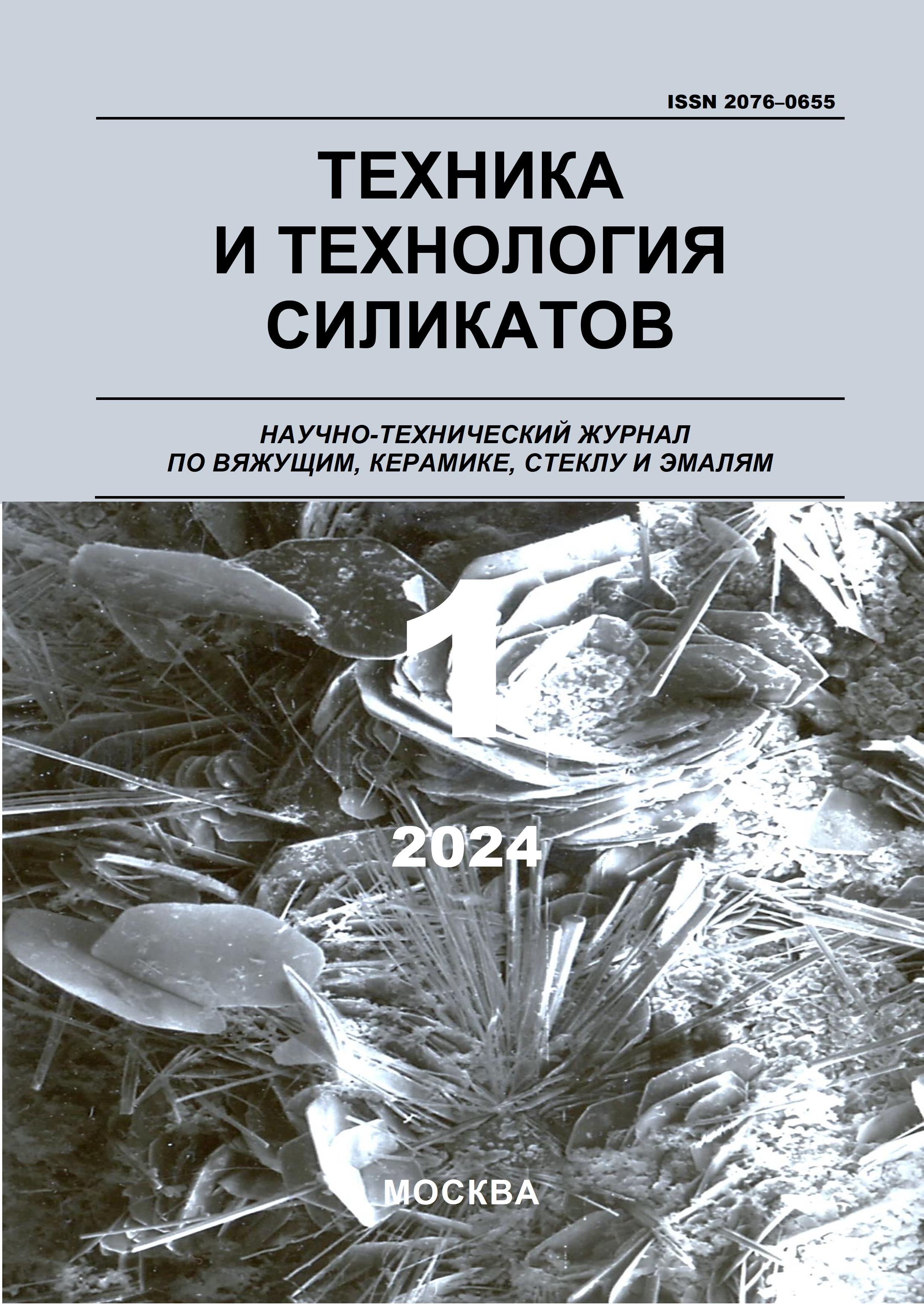employee
Moscow, Moscow, Russian Federation
Russian Federation
Russian Federation
UDC 691.3
CSCSTI 67.09
Russian Classification of Professions by Education 08.06.01
Russian Library and Bibliographic Classification 383
Russian Trade and Bibliographic Classification 6
The production of concrete mix is inevitably associated with the formation of sludge water, which has an impact on the environ-ment. The technology of recycling concrete mix allows you to use not only slurry water from the production of ready-mixed con-crete, but also to obtain a highly dispersed organomineral modifier (OMD) based on dehydrated sludge, obtained by fine grind-ing in a ball mill. A modifier was obtained by grinding in a ball mill for 2.5 hours with a specific surface area of 15657 cm2/g. The introduction of a dry polycarboxylate plasticizer in an amount of 0.025% made it possible to reduce the grinding time in the mill to 1 hour and obtain a specific surface area equal to 16227 cm2/g. The chemical composition of the organomineral modifier and the basic properties of cement paste in the presence of OMD are investigated. An increase in the normal density of the cement paste by 2.4%, an acceleration of the setting time and an increase in strength in the initial hardening periods were found. It is shown that the introduction of slurry water with mixing water in an amount of 5% into the concrete mixture does not lead to a decrease in strength parameters. The introduction of OMD based on slurry water in an amount of 10% does not adversely affect the technological properties and slightly increases the strength of concrete at the age of 28 days. The resulting modifier, partici-pating in the resource-saving cycle and possessing such important characteristics, will serve as an alternative to the use of other mineral additives used in the production of self-sealing concretes, will reduce the consumption of raw materials, and the selec-tion of its optimal content will affect changes in the technological and strength properties of concretes.
slurry water, grinding, specific surface area, concrete mix, self-sealing concrete, jrganic-mineral modifier
1. Larsen, O.A.; Samchenko, S.V.; Zemskova, O.V.; Korshunov, A.V.; Solodov, A.A. Self-Compacting Mixtures of Fair-Faced Concrete Based on GGBFS and a Multicomponent Chemical Admixture—Technological and Rheological Properties. Buildings 2024, 14,3545. https://doi.org/10.3390/ buildings14113545
2. Ostrouh A.V., Surkova N.E. Sistema reciklinga tovar-nogo betona / A.V. Ostrouh, N.E. Surkova // Luchshaya nauch-naya stat'ya 2017: sbornik statey XII Mezhdunarodnogo nauchno-prakticheskogo konkursa. Penza: Nauka i Prosve-schenie. - 2017. - S. 21–24.
3. Samchenko, S.V.; Larsen, O.A. Modifying the Sand Con-crete with Recycled Tyre Polymer Fiber to Increase the Crack Resistance of Building Structures. Buildings 2023, 13,897. https://doi.org/10.3390/ buildings13040897
4. Samouplotnyayuschiysya beton s kompensirovannoy usad-koy c ispol'zovaniem materialov iz betonnogo loma / S. V. Samchenko, V. V. Voronin, O. A. Larsen, V. V. Narut' // Izvestiya vysshih uchebnyh zavedeniy. Stroitel'stvo. – 2021. – № 2(746). – S. 71-78. – DOIhttps://doi.org/10.32683/0536-1052-2021-746-2-71-78. – EDN EYNTLL.
5. Silva M., Naik T.R. Sustainable use of resources – Recy-cling of sewage treatment plant water in concrete, in: 2nd Int. Conf. Sustain. Constr. Mater. Technol. - 2010.
6. Egorov E.S., Samchenko S.V., Abramov M.A. Vozmozhno-sti primeneniya gidrodinamicheski aktivirovannoy shla-movoy vody, poluchennoy iz sistemy reciklinga, pri pri-gotovlenii novyh betonnyh smesey. ALITinform: Cement. Beton. Suhie smesi. - 2022. - № 3 (68). - S. 42-54.
7. Asadollahfardi G., Asadi M., Jafari H., Moradi A., Asadol-lahfardi R. Experimental and statistical studies of using wash water from ready-mix concrete trucks and a batching plant in the production of fresh concrete // Constr. Build. Mater. – 2015. https://doi.org/10.1016/j.conbuildmat.2015.08.053.
8. Aboelkheir M.G., Pal K., Cardoso V.A., Celestino R., Yo-shikawa N.K., Resende M. M. Influence of concrete mixer washing waste water on the chemical and mechanical proper-ties of mortars // J. Mol. Struct. – 2021. https://doi.org/10.1016/j.molstruc.2021.130003.
9. Samchenko, S. V. Vliyanie ul'tradispersnoy dobavki iz predvaritel'no gidratirovannogo cementa na svoystva cementnoy pasty / S. V. Samchenko, E. S. Egorov // Tehnika i tehnologiya silikatov. – 2019. – T. 26, № 2. – S. 52-57. – EDN DAQXRC.
10. Samchenko, S. V. Upravlenie svoystvami cementnoy pasty pri ee modificirovanii predvaritel'no gidrati-rovannoy cementnoy suspenziey / S. V. Samchenko, E. S. Egorov // Tehnika i tehnologiya silikatov. – 2021. – T. 28, № 2. – S. 54-58. – EDN IPOIXD.
11. Samchenko, S. V. Osobennosti povtornogo ispol'zova-niya cementnyh suspenziy pri realizacii tehnologii reciklinga betonnyh smesey / S. V. Samchenko, E. S. Ego-rov, M. A. Abramov // Vestnik MGSU. – 2021. – T. 16, № 12. – S. 1573-1581. – DOIhttps://doi.org/10.22227/1997-0935.2021.12.1573-1581. – EDN MNTVKM.
12. Samchenko, S. V. Osobennosti protekaniya gidratacii i tverdeniya cementnyh past s dobavkoy gidratirovannogo cementa / S. V. Samchenko, M. A. Abramov, E. S. Egorov // Tehnika i tehnologiya silikatov. – 2020. – T. 27, № 1. – S. 24-28. – EDN XTXCAE.
13. Klus L., Aklavik V. V., Dvorsky T., Svoboda Ya., Papesh R. The use of wastewater from a concrete plant in the produc-tion of cement composites // Buildings. – 2017. - Vol. 7 – P. 120. doihttps://doi.org/10.3390/BUILDINGS 7040120.
14. Bugay A.V. Sovremennye sostoyaniya i tendencii razvi-tiya otrasli stroitel'nyh materialov v Rossii /A.V. Bu-gay // Elektronnyy nauchno-prakticheskiy zhurnal «Sovre-mennye nauchnye issledovaniya i innovacii». – 2016 g.
15. Parinov S.V., Kartushina Yu.N. Tehnologicheskaya shema polnoy pererabotki othodov proizvodstva osobo tyazhelo-go betona / S.V. Parinov, Yu.N. Kartushina // Vestnik Teh-nologicheskogo universiteta. - 2018. - T. 21, № 2. - S. 63–65.
16. Bouaich F.Z., Maherzi W., El-hajjaji F., Abriak N.E., Ben-zerzour M., Taleb M., Rais Z. Reuse of treated wastewater and non-potable groundwater in the manufacture of concrete: major challenge of environmental preservation, Environ. Sci. Pollut. Res. 29 – 2022. – pp. 146–157. https://doi.org/10.1007/s11356-021-15561-3 .









